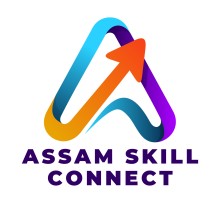Unlocking Growth Through the Self-Help Group Loan Scheme in India

Introduction: Empowering Communities with the Self-Help Group Loan Scheme
The self-help group loan scheme has become a transformative initiative across rural and semi-urban India. It empowers small communities, especially women, by providing access to formal credit through collective action. In a country where many still lack easy access to banking facilities, this scheme bridges the gap between marginalized populations and financial inclusion.
At its core, the self-help group loan scheme fosters savings habits, encourages entrepreneurship, and builds financial discipline. This grassroots-level approach isn’t just a banking model—it’s a movement that changes lives one group at a time.
What is the Self-Help Group Loan Scheme?
Before diving deeper, let’s clearly define what the self-help group loan scheme means. A self-help group (SHG) typically comprises 10 to 20 individuals, often women, who come together to pool savings and lend among themselves. Over time, the group develops creditworthiness and becomes eligible for bank loans under the SHG-Bank Linkage Programme, a key part of the scheme.
Under the self-help group loan scheme, these loans are usually collateral-free, meaning group members don’t have to mortgage any assets to get access to funds. The scheme has grown under the guidance of the National Rural Livelihoods Mission (NRLM), which works with banks and NGOs to connect SHGs with financial services.
Why the Self-Help Group Loan Scheme Matters in 2025
The self-help group loan scheme plays a more critical role today than ever before. In 2025, as India pushes toward inclusive growth, the financial empowerment of women and rural communities is essential. SHGs help bridge the income gap, enabling poor households to invest in small businesses, farming activities, or even education.
Women-led SHGs supported by the self-help group loan scheme have proven effective in uplifting entire communities. With access to credit, members often start home-based businesses, poultry farms, dairy units, or tailoring services. This not only increases household income but also boosts confidence and social mobility.
How the Self-Help Group Loan Scheme Works in Practice
Let’s look at how the self-help group loan scheme works on the ground. When an SHG is formed, members begin by saving a fixed amount regularly. These pooled savings are lent within the group at nominal interest. After six months to a year, the SHG can open a bank account and apply for a group loan.
Banks evaluate the SHG’s credit behavior, savings discipline, and internal lending history before approving loans under the self-help group loan scheme. Loan sizes typically increase over time—from ₹50,000 in the first cycle to ₹2 lakh or more in later cycles.
Most importantly, repayment responsibility lies with the group, creating mutual accountability. The fear of letting the group down encourages timely repayment and ensures the long-term success of the self-help group loan scheme.
Success Stories from the Self-Help Group Loan Scheme
Across India, thousands of SHGs have transformed their lives with help from the self-help group loan scheme. In Assam, for example, women in the Majuli district used SHG loans to launch organic farming cooperatives. These groups now supply vegetables to nearby towns, boosting income and community resilience.
In Tamil Nadu, one SHG utilized the self-help group loan scheme to start a community tailoring unit. Today, they manufacture school uniforms for local institutions, offering stable employment to group members and supporting their children’s education.
These success stories prove that the self-help group loan scheme is more than just a financial product—it’s a catalyst for sustainable, community-driven change.
Government Support for the Self-Help Group Loan Scheme
The Indian government has strongly supported the self-help group loan scheme through various policy initiatives. The DAY-NRLM (Deendayal Antyodaya Yojana – National Rural Livelihood Mission) works directly with banks to streamline access to credit for SHGs.
In Budget 2024-25, the government increased allocations for SHG development and introduced incentives for banks offering loans under the self-help group loan scheme. Additionally, state-level programs like Odisha’s Mission Shakti and Telangana’s Stree Nidhi further strengthen this network by providing easier access to revolving funds and capacity-building support.
These initiatives show that the self-help group loan scheme is a strategic pillar of India’s financial inclusion policy.
Benefits of the Self-Help Group Loan Scheme
The benefits of the self-help group loan scheme go beyond financial access. It builds trust, encourages collaboration, and fosters leadership, especially among rural women. Here are the key advantages:
-
Financial Independence: Members gain access to credit for income-generating activities.
-
No Collateral Needed: Loans are usually unsecured, reducing the burden on poor families.
-
Social Empowerment: SHGs create a platform for women to voice their concerns and make decisions.
-
Skill Development: Training provided under the self-help group loan scheme improves business, financial, and literacy skills.
-
Improved Livelihoods: Members use loans to start microenterprises, increasing household income sustainably.
With such wide-ranging benefits, it’s no surprise that the self-help group loan scheme has been embraced nationwide.
Challenges Faced by Self-Help Groups
Despite its many successes, the self-help group loan scheme isn’t without challenges. Some common issues include:
-
Lack of Awareness: Many rural populations remain unaware of the scheme or how to access it.
-
Inadequate Training: SHG members may struggle with financial management or business planning.
-
Bank Hesitation: Some banks are hesitant to lend due to fears of default, even though SHG loans have a high repayment rate.
-
Delayed Disbursement: In some cases, bureaucratic red tape slows down loan approvals.
Addressing these issues is key to unlocking the full potential of the self-help group loan scheme.
How to Join or Start a Self-Help Group
If you’re inspired by the impact of the self-help group loan scheme, you might wonder how to get involved. Starting or joining an SHG is relatively simple. Gather a small group of individuals with a shared goal—often women from the same locality.
Follow these steps to get started with the self-help group loan scheme:
-
Form the Group: 10–20 people with similar backgrounds or economic conditions.
-
Start Saving: Each member contributes a fixed monthly amount.
-
Internal Lending: Members borrow from the pool to meet small needs.
-
Open a Bank Account: After 6–12 months of operation.
-
Apply for a Loan: Approach a bank with records of savings and internal loans.
-
Repay on Time: Build your group’s creditworthiness for larger future loans.
Local NGOs and government livelihood missions often help with training and paperwork to ensure a smooth process.
The Future of the Self-Help Group Loan Scheme
The future of the self-help group loan scheme looks promising. With the rise of digital banking, SHGs now have access to mobile banking tools, digital wallets, and even credit scoring apps. These innovations make loan processing faster and more transparent.
Government policy continues to prioritize SHGs, with increased funding, easier documentation, and skill-building programs. If implemented effectively, the self-help group loan scheme could help millions more achieve financial independence and community development.
Conclusion: Transforming Lives, One Group at a Time
In conclusion, the self-help group loan scheme is not just a financial tool—it’s a vehicle for empowerment, community leadership, and long-term prosperity. From village tailors to small-scale farmers, countless Indians have turned their dreams into reality through SHGs.
As India looks to build an inclusive economy in 2025 and beyond, supporting the self-help group loan scheme should remain a top priority. Whether you’re a policymaker, a banker, a development worker, or a citizen looking to make a difference, the time to support SHGs is now.





Leave a comment